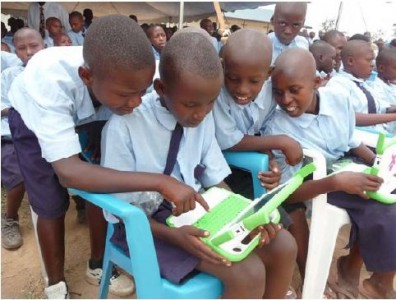A stray comment today about Windows not working on ARM machines, by someone who thought all OLPC laptops had moved away from Linux, reminded me to reaffirm something:
Every one of the 2M+ XOs we’ve ever made shipped from the factory with Linux. As far as I know, under 7,000 XOs have ever run Windows natively* – some 0.3% of all laptops we have ever produced. Most of those dual-booted into both Sugar and Windows XP, as part of programs sponsored independently by Microsoft. I know of a few teachers that had those machines in at least one class, but have never seen reports from a class using them — if you know of one of these schools, I would be most interested to hear about the experience — particularly from schools that used both OSes.
The XO community around the world includes one of the largest deployments of Linux to primary students anywhere in the world. This is something we can all be proud of.
* To be fair: running Windows in emulation through wine or SugaredWine is quite popular for certain activities. Â Three cheers for the wine team’s excellent work!


